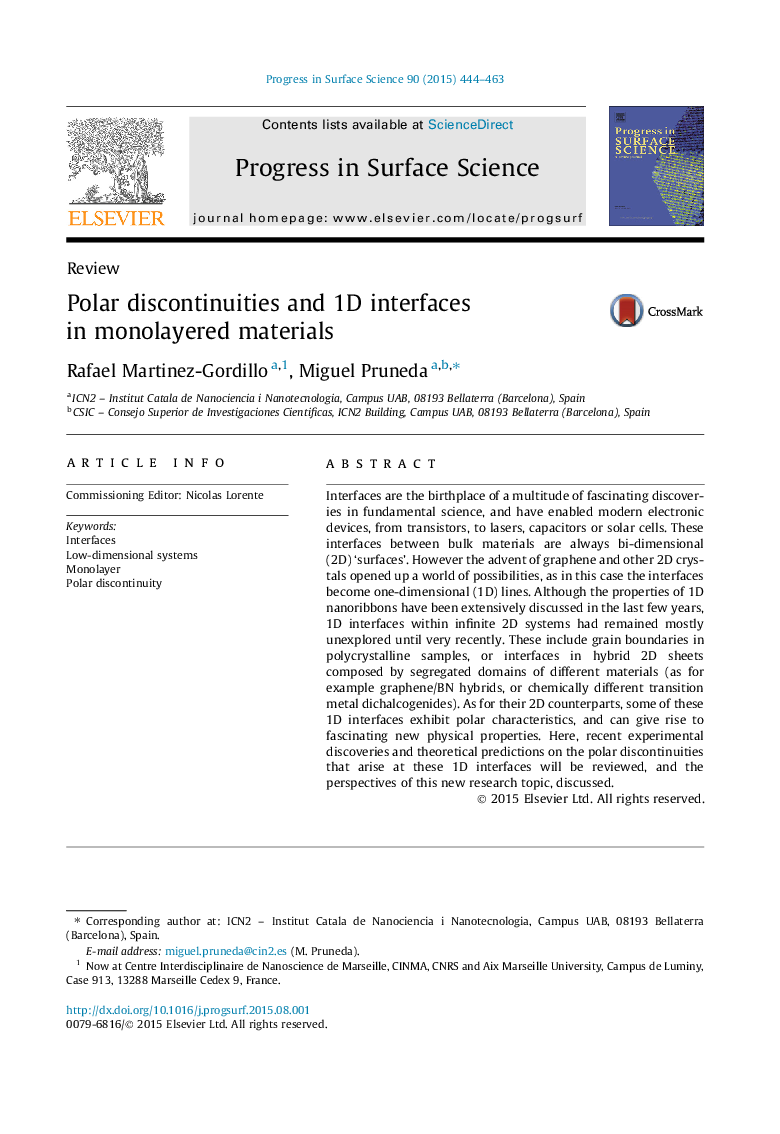| Article ID | Journal | Published Year | Pages | File Type |
|---|---|---|---|---|
| 5419935 | Progress in Surface Science | 2015 | 20 Pages |
Abstract
Interfaces are the birthplace of a multitude of fascinating discoveries in fundamental science, and have enabled modern electronic devices, from transistors, to lasers, capacitors or solar cells. These interfaces between bulk materials are always bi-dimensional (2D) 'surfaces'. However the advent of graphene and other 2D crystals opened up a world of possibilities, as in this case the interfaces become one-dimensional (1D) lines. Although the properties of 1D nanoribbons have been extensively discussed in the last few years, 1D interfaces within infinite 2D systems had remained mostly unexplored until very recently. These include grain boundaries in polycrystalline samples, or interfaces in hybrid 2D sheets composed by segregated domains of different materials (as for example graphene/BN hybrids, or chemically different transition metal dichalcogenides). As for their 2D counterparts, some of these 1D interfaces exhibit polar characteristics, and can give rise to fascinating new physical properties. Here, recent experimental discoveries and theoretical predictions on the polar discontinuities that arise at these 1D interfaces will be reviewed, and the perspectives of this new research topic, discussed.
Related Topics
Physical Sciences and Engineering
Chemistry
Physical and Theoretical Chemistry
Authors
Rafael Martinez-Gordillo, Miguel Pruneda,
